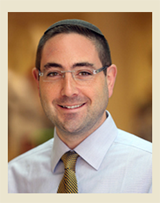
By Rabbi Ari Enkin, Rabbinic Director, United with Israel
Jews continue to pray three times every day for the rebuilding of the third and final eternal Temple, which will be called a house of prayer for all nations.
This week’s Torah portion is Tzav (Leviticus 6:1-8:36), which continues in the theme of the Temple and sacrifices that began last week. As promised, this week we will discuss the Beit Hamikdash, the Holy Temple, in Jerusalem. Perhaps after learning about the Temple we will come to better appreciate that which was taken from us when it was destroyed, along with the rest of the Land of Israel, about 2000 years ago.
Both the first and second Temple stood on The Temple Mount in Jerusalem, known as Har Hamoria in Hebrew. In fact, the Dome of the Rock which sits on the Temple Mount today is built upon the area of the “Kodesh Hakodashim” – the Holy of Holies, the most sacred area of the Temple. Many devout Jews avoid entering the Temple Mount due to its exalted sanctity, though some do visit the Temple Mount after a number of ritual purification rituals. According to all interpretations, however, Jews are forbidden from entering the Dome of the Rock, as the supreme holiness of the Kodesh Hakodashim (Holy of Holies) remains to this day.
According to Jewish tradition a number of significant events took place upon the “rock” that is inside the Dome of the Rock on the Temple Mount. For example, we are taught that the creation of the world began from there, that Adam was created from the earth of that spot, that Abraham nearly sacrificed Isaac upon that rock, and more.
The first Temple was built by King Solomon in 957 BCE. Once the Temple was completed, it was decreed that animal sacrifices may no longer be offered any place else. This decree is without expiration which is why there are no animal sacrifices in Judaism today. The first Temple was destroyed by the Babylonians in 586 BCS. The construction of the Second Temple began with Cyrus the great and was completed in 515 BCE.
It was during the second temple period that the well-known Chanukah story took place in which king Antiochus Epiphanes tried to force assimilation upon the Jewish people throughout the land of Israel. Antiochus desecrated the Temple and introduced idolatry. The Maccabee rose up against Antiochus and restored religious freedom and Jewish operation of the Temple.
The second Temple was destroyed by the Romans in 70 CE at which time the Jews were led into a 2000 year exile and Jewish presence in the land of Israel was all but forgotten. While the second Temple was a sacred edifice and the center of all Jewish worship, it lacked some of the glory of the first Temple. For example, the second temple did not have the Ark of the Covenant and by extension, did not have the original tablets of the Ten Commandments. So, too, the container of manna, Aaron’s rod, and the holy oil were absent, as well. This is because these items had been lost in the course of the destruction of the first temple and the subsequent exile.
When the Jewish people came back to their land in 1948, the Jordanians forbade the Jews from praying at the Western Wall – the last surviving remnant from the Temple. In the 1967 Six Day War, the Israeli Defense Forces, like the Maccabees before them, liberated the Western Wall thereby restoring and guaranteeing freedom of worship at the Western Wall for one and all. Jews continue to pray three times every day for the rebuilding of the third and final eternal Temple.
We believe that the Messiah will be the one to rebuild the Temple once and for all. And when that happens, we will all witness the fulfillment of the verse “Then I will bring them to my holy mountain and make them happy in my house of prayer. Their burnt offerings and their sacrifices will be acceptable on my altar, because my house will be called a house of prayer for all nations” (Isaiah 56:7). Amen. May it be speedily in our days.
Shabbat Shalom from Israel! Please SHARE with your family and friends!